Maps
Type of resources
Available actions
Topics
Keywords
Contact for the resource
Provided by
Years
Formats
Representation types
Update frequencies
Service types
Scale
-
The Quantifying Flood Risk of Extreme Events using Density Forecasts Based on a New Digital Archive and Weather Ensemble Predictions Project is a Natural Environment Research Council (NERC) Flood Risk for Extreme Events (FREE) Research Programme project (Round 1 - NE/E002013/1 - Duration January 2007 - December 2008) led by Dr Patrick McSharry, University of Oxford. The dataset contains a collection of rainfall depth maxima data, dating back to 1860, plus associated description documents and rainfall maps of extreme events across the UK, have been used. All of these products have been digitised from the paper version of the British Rainfall publication, and are now archived at the BADC to enable easy access for future use and the wider community. Floods in the UK are often caused by heavy rainfall lasting from minutes to weeks. Efficient management and mitigation of flood risk, especially surface water flooding in urban areas, requires accurate and reliable precipitation forecasts as inputs to flood risk models. Houses in flat areas are particularly at risk and meeting the shortage of houses in the south-east requires building on these areas. To estimate the flood hazard risk in order to try to protect these buildings, accurate rainfall predictions are needed. However, the connection between record rainfall and flooding is highly nonlinear, so that rainfall predictions must also say how likely rainfall is at any time - calculating the probability of rainfall. Extreme rainfalls caused devastating floods in Boscastle in 2004 and Lynmouth in 1952, but the causes and pattern of rainfall was different. Therefore, scientists also need to know what pattern of rainfall caused the flooding. This research aims to get good quality predictions of the probability of rainfall by combining advanced methods from statistics, the output from a new supercomputer model of the weather, and a new computer archive of exteme rainfalls going back to 1866 (and up to 1968), provided by a specialist company Hydro-GIS Ltd. It also aims to produce an automatic system for discovering the most likely pattern in the predicted rainfalls. The new prediction system and data will be freely available over the internet for use by the government and universities.
-
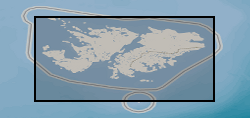
The dataset comprises maps and aerial photographs of the Falkland Islands. The maps are printers films and final paper printed originals of Falkland Islands OS maps, compiled for the Falkland Islands Government and the Foreign and Commonwealth Office by the Overseas Directorate of the Ordnance Survey. They were discarded by the Ordnance Survey around 2004, and offered to BGS for storage on behalf of the Falkland Islands Government. The Falkland Islands Government retains copyright interest in the maps. There are no access or usage constraints for BGS staff for BGS purposes. The aerial photographs and associated paper overlays represent copies of field slips of geological maps that were compiled by BGS under contract to the Falkland Islands Government. Copyright remains with the Falkland Islands Government , but there are no access or usage constraints for BGS staff for BGS purposes. Access to both datasets are restricted to BGS staff.
-
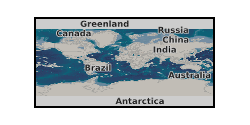
The dataset comprises scanned images of maps and aerial photographs of the Falkland Islands. The original maps are printers films and final paper printed originals of Falkland Islands OS maps, compiled for the Falkland Islands Government and the Foreign and Commonwealth Office by the Overseas Directorate of the Ordnance Survey. The Falkland Islands Government retains copyright interest in the maps. There are no access or usage constraints for BGS staff for BGS purposes. The field slips of geological maps were compiled by BGS under contract to the Falkland Islands Government. Copyright remains with the Falkland Islands Government , but there are no access or usage constraints for BGS staff for BGS purposes. Access to both datasets are restricted to BGS staff.
-
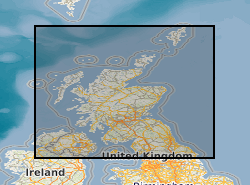
Collections of miscellaneous items mainly of semi-current value, including some field observations supplementary to 1:10560/1:10K mapping, arranged on 1:10K or One-Inch sheet basis. Set up in 1950's filing miscellaneous records for Scotland and Northern England. Records of archival value for permanent retention being transferred to Land Survey Archives (LSA). Indexed in the Land Survey Record Index (LSRI).
-
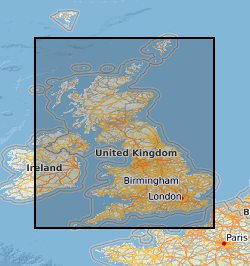
[This metadata record has been superseded, see http://data.bgs.ac.uk/id/dataHolding/13608195] Scanned images of Geological map 'Standards', manuscript and published maps produced by the Survey on County Series (1:10560) and National Grid (1:10560 & 1:10000) Ordnance Survey base maps. Current holdings over 41,000 maps for Great Britain. The majority of maps were scanned in 2004, any new maps produced are scanned and added to the collection.
-
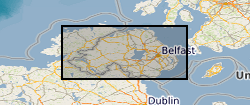
The 1:250k Geological Maps of Northern Ireland comprise the Superficial Deposits Map (Drift, 1991) and the Bedrock Map (Solid Geology, 1997). These maps identify landscape areas based on their lithology. The scale of the maps is 1:250 000 and provides a simplified interpretation of the geology that may be used as a guide at a regional level, but should not be relied on for local geology. Superficial deposits are younger geological deposits formed during the most recent geological time; the Quaternary. These deposits rest on older rocks or deposits referred to as bedrock. The superficial deposits theme defines landscape areas with a geological name and their deposit-type or lithological composition. The Superficial map shows the deposits within the extent of the six Counties of Northern Ireland. The Bedrock map comprises the bedrock geology and contains dykes and geological faults. Bedrock geology describes the main mass of solid rocks forming the earth's crust. Bedrock is present everywhere, whether exposed at surface in outcrops or concealed beneath superficial deposits or water bodies. Geological names are based on the lithostratigraphic or lithodemic hierarchy of the rocks. The lithostratigraphic scheme arranges rock bodies into units based on rock-type and geological time of formation. Where rock-types do not fit into the lithostratigraphic scheme, for example intrusive, deformed rocks subjected to heat and pressure resulting in new or changed rock types; then their classification is based on their rock-type or lithological composition. This assesses visible features such as texture, structure, mineralogy. Dykes defines small, narrow areas of a specific type of bedrock geology; that is igneous rocks which have been intruded into the landscape at a later date than the surrounding bedrock. Geological faults occur where a body of bedrock has been fractured and displaced by large scale processes affecting the earth's crust (tectonic forces). The Bedrock map shows the main bedrock geological divisions in Northern Ireland and coverage extends to the west into the Republic of Ireland. The printed map includes a stratigraphic column. Digital datasets have been derived from the maps and comprise three layers. 1. Superficial polygons, 2. Bedrock polygons and 3. Linear features. Attribute tables describe the polygon features. These data are generalised and superseded by the 1:10k Geological Maps of Northern Ireland.
-
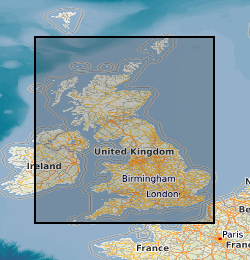
Photographic negatives of Geological map 'Standards', manuscript and published maps produced by the Survey on County Series (1:10560) and National Grid (1:10560 & 1:10000) Ordnance Survey base maps. Current holdings over 41,000 maps for Great Britain. The majority of maps were scanned in 2004, any new maps produced are scanned and added to the collection. This is essentially a back up collection for disaster recovery.
-
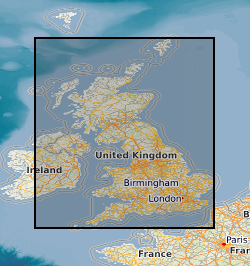
Geological map 'Standards', manuscript and published maps of Great Britain produced by the Survey on County Series (1:10560) and National Grid (1:10560 & 1:10000) Ordnance Survey base maps. Maps produced since the 1860's, current holdings over 41,000 maps, all now available internally as image files.
-
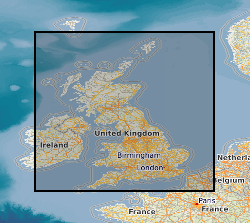
This dataset comprises two collections of maps. The facsmile collection contains all the marginalia information from the original map as well as the map itself, while the georectified collection contains just the map with an associated index for locating them. Each collection comprises approximately 101 000 monochrome images at 6-inch (1:10560) scale. Each image is supplied in TIFF format with appropriate ArcView and MapInfo world files, and shows the topography for all areas of England, Wales and Scotland as either quarter or, in some cases, full sheets. The images will cover the approximate epochs 1880's, 1900's, 1910's, 1920's and 1930's, but note that coverage is not countrywide for each epoch. The data was purchased by BGS from Sitescope, who obtained it from three sources - Royal Geographical Society, Trinity College Dublin and the Ordnance Survey. The data is for internal use by BGS staff on projects, and is available via a customised application created for the network GDI enabling users to search for and load the maps of their choice. The dataset will have many uses across all the geoscientific disciplines across which BGS operates, and should be viewed as a valuable addition to the BGS archive. There has been a considerable amount of work done during 2005, 2006 and 2007 to improve the accuracy of the OS Historic Map Collection. All maps should now be located to +- 50m or better. This is the best that can be achieved cost effectively. There are a number of reasons why the maps are inaccurate. Firstly, the original maps are paper and many are over 100 years old. They have not been stored in perfect condition. The paper has become distorted to varying degrees over time. The maps were therefore not accurate before scanning. Secondly, different generations of maps will have used different surveying methods and different spatial referencing systems. The same geographical object will not necessarily be in the same spatial location on subsequent editions. Thirdly, we are discussing maps, not plans. There will be cartographic generalisations which will affect the spatial representation and location of geographic objects. Finally, the georectification was not done in BGS but by the company from whom we purchased the maps. The company no longer exists. We do not know the methodology used for georectification.
-
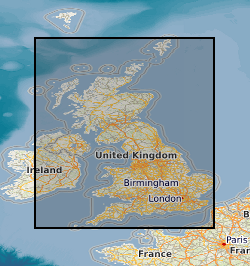
This layer of the GeoIndex shows the availability of 1:25000 scale Classical Areas Geological Maps. The maps themselves show the occurrence, nature and stratigraphic age of rocks. They are available for selected areas of outstanding geological interest in the United Kingdom, and in a number of versions (Solid, or Solid and Drift combined, Bedrock or Superficial). Maps are normally available in both flat and folded format. 1:25000 scale maps are also available for the Channel Islands. To order maps, take note of the map name and use the BGS Internet Shop.
 NERC Data Catalogue Service
NERC Data Catalogue Service